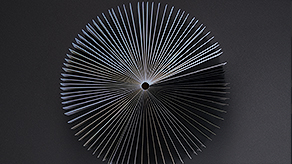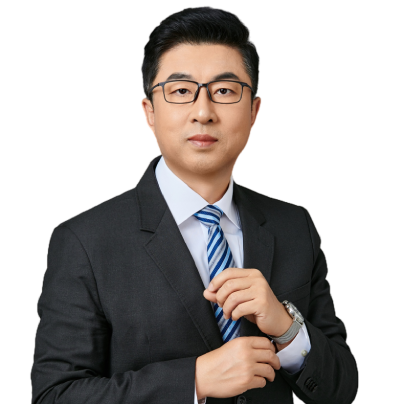Legal Insights from China Landmark AIGC Cases
Legal Insights from China Landmark AIGC Cases
In 2023, Beijing Internet Court delivered a ruling in the Spring Breeze Case[1], which has gained wide media recognition as “China’s first copyright infringement case concerning images generated by artificial intelligence”. The case saw, for the first time, a Chinese court provided clarification on whether content generated by artificial intelligence (“AIGC”) qualifies as a work that enjoys copyright.
Just a few months later, Guangzhou Internet Court issued another judgment regarding AIGC copyright infringement on a dispute dubbed the Ultraman Case, marking “the first case of copyright infringement involving AIGC platforms”[2]. In this case, Guangzhou Internet Court decided that by offering AIGC services, the AI platform operated by the defendant violated the plaintiff’s rights to reproduce and adapt the Ultraman works, which marks the first case in China where an AIGC platform was held liable for such violation. As a result, the defendant is deemed responsible for the associated civil liabilities.
The two judgements sparked significant discussions in both the theoretical and practical domains of copyright law in China. As the use of AI for creating artistic and intellectual works continues to grow, we expect more similar cases. The questions of whether AIGC constitutes a copyrighted work, who owns its copyright, and the implications for stakeholders have emerged as new points of debate. As such, exploring these two judgments more closely would yield insights into the judicial reasoning behind the determination of AIGC as works, particularly from the standpoint of copyright protection and the promotion of technology advancements.
Overview of the Spring Breeze Case
1.Case background
The plaintiff generated a series of images by using an open-source Stable Diffusion package and training images and posted these generated images on Xiaohongshu, also known as Red Note, under the caption “Spring Breeze Brings Gentle Warmth”. Then the plaintiff, while browsing a video website, discovered that the defendant used one of the images he had generated without asking him for permission.
It turned out that the defendant, a blogger and poetry enthusiast, used an image published by the plaintiff in a social network post and removed the watermark indicating the source of the image. The plaintiff accused the defendant of infringing on the right of attribution and the right of information network dissemination.
2.The plaintiff’s image generation process by using Stable Diffusion
Based on publicly accessible information and relevant studies, Stable Diffusion is trained on a vast array of images and their associated textual descriptions sourced from the internet. This model is designed to create images that correspond to textual information by leveraging the relationship between the semantic content of the text and the visual elements of the image.
In this case, the plaintiff aimed to create a close-up image of a beautiful woman, utilizing a photographic style to capture the essence of dusk lighting. He gave specific prompts to the Stable Diffusion model, designating the art type as “hyper-realistic photo” and “color photo” and identifying the subject as a “Japanese idol”. The plaintiff put in detailed descriptions regarding skin condition, eye color, and braid color, while specified the setting as “outdoor”, “golden hour”, and “dynamic lighting”. The subject’s presentation was described as having a “cool pose” and “looking at the camera”, incorporating styles such as “film texture” and “film simulation”. After establishing relevant parameters and rounds of image generation, the plaintiff refined the prompts and adjusted the parameters, ultimately resulting in an image to his satisfaction.
3.Whether the generated image of Stable Diffusion qualified as an intellectual achievement
“Intellectual achievements” encompass the outcomes of intellectual endeavors, and as such, the works produced should demonstrate the intellectual contributions of individuals. In the Spring Breeze Case, the entire process, from the initial conception of the image to the final selection, involved significant intellectual contribution. This included designing the subjects’ presentation, choosing and sequencing prompt words, setting parameters, and determining which image aligned with the image creator’s vision. Along this line, the disputed image in this case reflect the plaintiff’s intellectual effort, qualifying it as an “intellectual achievement”.
However, whether images generated by artificial intelligence reflect the creator’s personalized expression requires case-by-case assessment, rather than one-size-fits-all generalization. Generally, when individuals utilize models like Stable Diffusion to create images, the more distinct their prompts are from others, along with the clarity and specificity of visual descriptions and layout compositions, the more likely the creations are to reflect the creators’ individual expression.
4.Comments from Beijing Internet Court
Beijing Internet Court provided a summary of its judgment, which can be outlined as follows:
It’s important to recognize that generative AI is transforming the creative process in a manner akin to many previous technological innovations, that is, technological breakthroughs have often involved transferring tasks traditionally performed by humans to machines. As technology continues to evolve and tools become increasingly sophisticated, the reliance on human input tend to decrease. Despite this shift, our commitment to the copyright system remains unchanged, as it plays a vital role in fostering the creation of new works. The primary objective of the copyright system is to encourage creativity. By effectively applying copyright principles and leveraging appropriate legal frameworks, we can inspire more individuals to create using the latest technologies, thereby promoting both artistic expression and advancements in artificial intelligence. In this context, as long as AI-generated images reflect an individual’s original intellectual contributions, they should be acknowledged as works deserving copyright protection.
Overview of Ultraman Case
1.Case background
The defendant operated the Tab website, which offered features of AI chatbot and AI artwork generation. Tab’s AI painting feature was offered exclusively to its members. Launched in 2022, the platform allowed paid users unrestricted access to the membership version without limitations on word count. Upon purchasing a membership, a user received an amount of “computing power” points, which was used for AI painting, with each session consuming three units of "computing power". Once depleted, users have to purchase additional “computing power” to continue use the feature.
The plaintiff raised concerns after discovering that when using Tab to create images of Ultraman—such as images created by entering the request “generate an image of Dyna Ultraman”—the results held a striking resemblance to the plaintiff’s own Ultraman images. The plaintiff contended that the defendant had unlawfully utilized its copyrighted works without permission to train the defendant’s large model, resulting in the generation of these similar images. Furthermore, the plaintiff alleged that the defendant had profited illegally through the membership subscriptions and sale of “computing power” points. This situation had caused significant harm to the plaintiff, prompting it to file a lawsuit to safeguard its legal rights.
The plaintiff claimed, as a core cause of action in this case, that the Tab website, managed by the defendant, had the ability to produce images that closely resembled Ultraman characters. It also argued that the AI drawing feature of Tab, available only to members, required “computing power” points for each image generated. To support its case, the plaintiff presented screenshots of images created by the defendant’s Tab website based on particular prompts. A comparison between the original composite image of Dyna Ultraman and the primary screenshot generated by the Tab website reveals that the produced images retain the unique expressive elements found in the Ultraman character’s artistic style.
2.Did the defendant infringe upon the plaintiff’s rights to reproduction, adaptation, and information network dissemination?
Whether the defendant violated the plaintiff’s right to reproduction
The images submitted by the plaintiff, which were generated by the Tab website, either partially or fully replicated the original artistic expression of the character “Ultraman”. Therefore, the defendant was deemed to have reproduced the Ultraman works without authorization, thereby infringing upon the plaintiff’s right to reproduce these works.
Whether the defendant infringed upon the plaintiff's right to adaptation
The generated images in question retain elements of the original expression from the “Dyna Ultraman Composite” work while exhibiting new characteristics derived from that original expression. As such, the Ultraman images generated by defendant’s website could be seen as an adaptation of the Ultraman works, which means the defendant adapted the Ultraman works without permission, infringing upon the plaintiff’s right to adapt these works.
Whether the defendant infringed upon the plaintiff’s right to disseminate information over networks
In light of the plaintiff’s claim of a distinct infringement concerning the right to information network dissemination, considering the unprecedented nature of this AI-related infringement case, the court has already ruled in favor of the plaintiff regarding the infringement of reproduction and adaptation rights. Therefore, to avoid redundancy, the court will refrain from further assessing whether the right to information network dissemination was infringed upon, as the same alleged infringing behavior has already been addressed under the reproduction and adaptation rights.
3.The role of third-party platforms in generative artificial intelligence services
A key aspect of the Ultraman copyright dispute centered on the role of third-party platforms in generative artificial intelligence services. These platforms serve as more than conduits for information exchange; they play a significant role in the integration of technology and applications for the services. The use of advanced Stable Diffusion technology in this case, for example, demands not only precise technical alignment but also a deep understanding of the platform’s own business needs and usage scenarios, resulting in a series of intricate engineering operations. Rather than simply using existing open-source models, these AIGC service platforms engage in targeted optimizations, modifications, and enhancements based on a thorough understanding of the model’s characteristics and specific application contexts. This approach requires not only technical expertise but also a keen awareness of the target market to ensure that the services provided address users’ actual needs. Consequently, the third-party platforms constitute a vital link between open-source models and end users. By delivering customized solutions and produce results, they take part in the creative process and earn profits therefrom.
Given their essential role in the commercial landscape and the economic advantages derived from content generated for specific usage, these service providers are expected to understand and remain highly attentive to monitor the content relevant to their businesses. They possess technological strengths and market insights to take into account service types, business logic, and the costs associated with preventing infringement, and they bear a significant responsibility of such prevention. This entails taking proactive measures to ensure that the generated content does not infringe upon others’ intellectual property rights, including copyrights and trademarks.
4.Comments from Guangzhou Internet Court
In cases involving generative artificial intelligence services, courts typically hold that third-party platforms should assume appropriate duties of care based on several factors, including the nature of the service, the importance of the infringement details, the platform’s business model, and the potential repercussions of the infringement. These platforms are expected to implement reasonable preventive measures to mitigate the risk of infringing activities, in line with their information management capabilities. However, if a third-party platform clearly states in its user service agreement that it does not review user-uploaded content and fails to adequately demonstrate, during pre-litigation evidence preservation, that it has displayed effective complaint and reporting channels prominently on its website, this will be viewed as a failure to meet essential review and regulatory responsibilities.
It is important to highlight that when third-party platforms are notified of infringement lawsuits, they typically respond by taking actions such as blocking the relevant content and enhancing their intellectual property review. These measures illustrate that it is feasible to effectively manage and filter out infringing information using technical solutions that do not significantly increase operational costs, and that third-party platforms possess the necessary technical capabilities to prevent infringement. However, if they have not leveraged these capabilities in option and have instead maintained a hands-off approach, this may be viewed as a failure to fulfill their responsibility to prevent infringement.
Consequently, third-party platforms that offer generative artificial intelligence services should not only acknowledge their responsibility to uphold the legality of online content but also proactively implement preventive measures that align with current technological advancements and are cost-effective. This will help ensure that user-uploaded content does not infringe upon the legitimate rights and interests of others.
Our Recommendations
As AI technology continues to advance rapidly in China, a growing trend has emerged where courts recognize AIGC as copyrighted works, as demonstrated by the outcomes of the two landmark cases. This trend impacts not only AI users but also third-party platforms, major AI model companies, and other stakeholders.
Firstly, AI users shall enhance their understanding of copyright and compliance practices.
While benefiting from AI technology, users should be aware of the significance of copyright protection. They must, in their use of AI tools, strictly follow copyright laws and refrain from using unauthorized images, audio, videos, and other materials to avoid copyright conflicts. AIGC creators should familiarize themselves with the legal definition of works under Chinese law, if they want to ensure that the AIGC they create is qualifies for legal protection. Furthermore, AI creators are advised to lean into the originality and artistic quality of their AIGC and improve the innovative and aesthetic qualities of their works by refining their creative processes and honing their skills.
Secondly, the third-party platforms shall improve their regulatory and compliance frameworks.
As key channels for distributing AIGC, these platforms should take on regulatory responsibilities. They need to implement a thorough content review system, enhance oversight of generated content, and ensure that no infringing images or audio are produced. Additionally, platforms should eliminate infringing materials from training datasets to mitigate infringement risks. They should also establish user agreements and platform guidelines to clarify legal responsibilities, including those regarding copyright protection, and raise users’ awareness of these issues. When working with rights holders, platforms should respect their intellectual property rights and foster communication and collaboration to support the compliant growth of AIGC.
Thirdly, it’s time for large AI model companies to refine their algorithms and bolster data management.
While advancing AIGC technology, these companies should also embrace their social responsibilities. They should continually enhance algorithm design to improve the originality and artistic quality of AIGC, catering to users’ diverse needs. Additionally, companies must strengthen the protection and management of user data to ensure the security and privacy of user information. In partnerships with third-party platforms, companies should clarify copyright ownership and responsibility distribution to minimize legal risks. Moreover, they should actively engage in industry self-regulation and standardization initiatives in support of the sound evolution of AIGC technology.
Last but not least, the industry shall also collaboratively advance AIGC copyright protection.
Beyond AI users, third-party platforms, and large AI model companies, other entities such as copyright holders, industry associations, and government agencies should also play an active role in AIGC copyright protection. Copyright holders should enhance collaboration with AI users to explore reasonable copyright licensing models. Industry associations should advocate for the establishment of industry standards and norms, reinforcing self-regulation within the sector. Government bodies should update and upgrade relevant laws, regulations, and policies to provide foster the robust development of AIGC.
Conclusion
As milestones in the copyright protection of AIGC in China, the Spring Breeze Case and the Ultraman Case not only establish a solid theoretical foundation and practical guidance for the copyright protection of AIGC works, but also provide valuable precedents and insights that will enhance global AIGC copyright protection systems.
As AI technology continues to evolve, the challenges surrounding AIGC copyright protection will likely become more intricate and varied. Therefore, it is crucial for industry players to stay abreast with the judicial developments and technological progress in AIGC, continually enhance relevant laws, regulations, and policies, and to strengthen collaboration and communication among all involved entities for the AIGC sector to grow sustainably.
[Note]
[1](2023)JING0491MINCHU11279HAO
[2](2024)YUE0192MINCHUA113HAO









